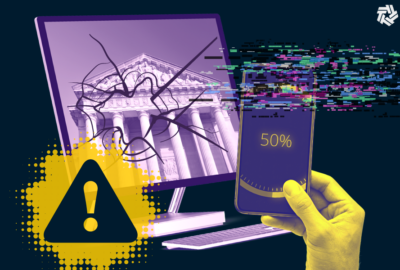

Login problems and re-ticketing show up among issues with IT user experience at DoD according to a survey from the Defense Business Board.
With a whopping 80% of survey respondents rating their user experience as average or below, the Defense Department has some work to do on its end-user IT systems. The survey was part of a study carried out by a subcommittee of the Defense Business Board (DBB) to get feedback on Joint Service Provider (JSP) usage and to recommend ways to improve it.
The survey got results from about 20,000 IT users across the department. Of those respondents, 48% rated their experience as a “worst,” and 32% fell into the category of average. According to the Defense Information Systems Agency, JSP serves about 55,000 customers.
“The survey discussed log-on time, reboot time. That’s real work productivity that’s lost by the department, resulting in work stoppage, that we believe needs to be addressed,” said DBB member Marachel Knight at a board meeting to review the study on Feb. 2.
Users also reported problems with IT-driven work stoppages and re-authentication frequency. IT problems showed up for both remote and in-office users, with slightly more problems for in-office users. Based on the study, the board concluded users were suffering from significant productivity loses, and had come to expect suboptimal IT performance as the norm. Aside from loss of productivity, the board concluded this also caused morale and retention problems.
“We talk about talent management, recruitment, retention. It’s very clear that this would be considered a significant problem in industry. If that happened in our company, people would be fired, it would be an intolerable situation,” said board member Stan Soloway.
When DoD employees have an IT problem, they turn to the help desk. But results from the survey indicated lots of problems in that part of customer experience as well. The subcommittee found that DoD has a multitude of tiered help desks with inconsistent service levels, metrics, tools and data collection methods. The various desks don’t communicate with one another and issues often went unresolved. When the user asked for help, they were issued a new ticket and resolution started over from the beginning. The committee recommended better integration of help desks.
“One of the biggest areas that we’ve had was somebody would close a ticket, but it wasn’t really resolved. So it was multiple reoccurring issues on the same exact problem. Instead of reopening the existing ticket, they would just issue a new ticket,” said board member Suzanne Leopoldi-Nichols.
The device employees used impacted how well their IT worked. The study found big differences in end point experiences among different user groups. It pointed to aging technology as a prime culprit. The quality of user experience was determined by the device they are logged into and how well it worked. The committee recommended replacing computers more frequently and monitoring end point performance.
“Actually monitoring the experience on the endpoint device will give you the data that can help drive metrics. That could really showcase where we have great experiences and where there’s opportunities for improvement,” said Knight. “So that’s one of the benefits, and we think we should do endpoint monitoring on all devices.”
In addition to the survey, the six-month study involved interviews with DoD leaders and industry IT professionals, and reviewed literature to provide context for the findings. The nine-member subcommittee presented their findings to the board at the meeting and the board voted to accept the report.
The report found that on the whole, DoD lacked performance metrics for IT user experience, and siloed IT policies caused inefficiencies across the department. The report described five levels of customer experience maturity ranging from reactive, the lowest level, to customer-centric, the highest level. It concluded DoD was still mired in the reactive stage, with only a rudimentary understanding of customer experiences.
Over the past year, the Pentagon took steps to consolidate IT management. In a Sept. 30 memo, Deputy Defense Secretary Kathleen Hicks established a chief information officer to cover the Office of the Secretary of Defense, a position that went to Danielle Metz. She has a mandate to create a workable governance structure and move towards standardizing IT services.
Copyright © 2025 Federal News Network. All rights reserved. This website is not intended for users located within the European Economic Area.
Alexandra Lohr, a former staff member, covered the Defense Department for Federal News Network until September 2023.


